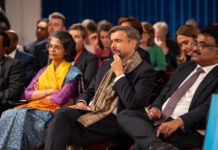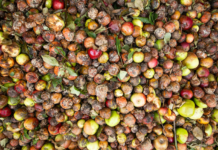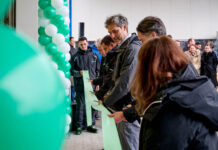Available in over 85 countries and with more than 5 billion bars sold annually, KitKat is Nestlé’s leading confectionery brand in terms of both revenue and brand value, making it a cornerstone of the company’s global portfolio. It marks 90 years since the brand’s beginning in 1935 in York, England.
With its iconic tagline, ‘Have a break, have a KitKat,’ KitKat has become the international symbol of a meaningful break from the stresses of daily life. Throughout its 90-year history, the brand has continuously reinvented itself to cater to new consumption moments and to appeal to the local tastes and cultural preferences of many regions around the world. Originally created as a four-finger chocolate-covered wafer bar, KitKat, today, is offered in over 300 diverse flavors, including matcha, sake and wasabi, and in various formats, such as ice cream, cereals, hot and cold drinks, and chocolate spreads.
Nestlé continues to invest in its biggest and most profitable brands, like KitKat, because of the growth opportunities they offer. Most recently, the company launched the KitKat tablet in Europe, where tablets have grown by over CHF 1.4 billion in sales over the past two years and are now valued at CHF 7.5 billion. With tablets now the second most popular chocolate format in Europe, the KitKat tablet is designed to capture the growing demand for indulgent and shareable chocolate experiences. KitKat is known for providing consumers with a much-needed break during the day. With the tablet, it is now expanding to new occasions, like those well-earned, end-of-day breaks at home, after work or during the weekend.
KitKat has also collaborated with other very popular Nestlé brands, such as Nescafé, to create the KitKat Nescafé Mocha Flavour. And it has introduced the KitKat Chunky Funky eye-catching bars to engage younger consumers.
“Effective marketing with a consistent message is crucial for continuously winning over consumers across geographies,” said Rouven Lochmüller, KitKat Global Brand Manager. “Global campaigns, such as the recently launched ‘Break Better’ campaign which encourages people to have better breaks, is another example of how the ‘have a break’ positioning has remained the cornerstone of the brand, even as it adapts to present-day culture.”
Global partnerships, like the one KitKat recently formed with Formula 1 – Nestlé’s largest global brand partnership to date, help increase visibility of KitKat. Through these global alliances, the brand is able to strengthen its resonance with existing KitKat fans as well as with new consumers, for example, by appealing to Gen Z’s love for excitement and innovation.
KitKat has also maintained its continuous success throughout its 90 years by finding a balance between a consistent brand experience and localization to achieve maximum impact and profitability. From customizing its flavors and recipes to local preferences to offering spectacular breaks at one of the world’s biggest music festivals in Brazil, for example, KitKat targets key consumer groups in different markets through various partnerships, advertising channels and event marketing. The brand also recently teamed up with Netflix and Spotify in India and also encouraged League of Legends esports athletes and fans to take a break from their screens through the ‘Ultimate Break.’
As the brand looks to the next 90 years, KitKat will continue to reinvent itself, applying many of the same strategies it has in the past, but constantly modernizing to appeal to changing consumer preferences.
IndiFoodBev — authentic, impactful and influential
An English-language food and beverage processing and packaging industry B2B platform in print and web, IndiFoodBev is in its third year of publication. It is said that the Indian food and beverage industries represent approximately US$ 900 billion in revenues which implies more than 20% of the country’s GDP. Eliminating the wastage on the farmside can help to deliver more protein to a higher number of the population apart from generating sizable exports. The savings in soil, seeds, water, fertilizer, energy and ultimately food and nutrition could be the most immense contribution that country is poised to make to the moderation of climate change.
To improve your marketing and grow sales to the food and beverage processing and packaging industry, talk to us. Our research and consulting company IppStar [www.ippstar.org] can assess your potential and addressable markets in light of the competition. We can discuss marketing, communication, and sales strategies for market entry and growth.
Suppliers and service providers with a strategy and budget for targeted marketing can discuss using our hybrid print, web, video, and social media channels to create brand recognition linked to market relevance. Our technical writers are ready to meet you and your customers for content.
The second largest producer of fruit and vegetables in the world is continuously expanding processing capacities and delivery systems with appropriate innovative technologies. We cover product and consumer trends, nutrition, processing, research, equipment and packaging from farm to thali. Get our 2025 media kit and recalibrate your role in this dynamic market. Enhance your visibility and relevance to existing markets and turn potential customers into conversations. Ask for a sample copy of our bi-monthly in print or our weekly IndiFoodBev eZine each Wednesday.
For editorial info@ippgroup.in — for advertisement ads1@ippgroup.in and for subscriptions subscription@ippgroup.in
Naresh Khanna – 10 February 2025
Subscribe Now











